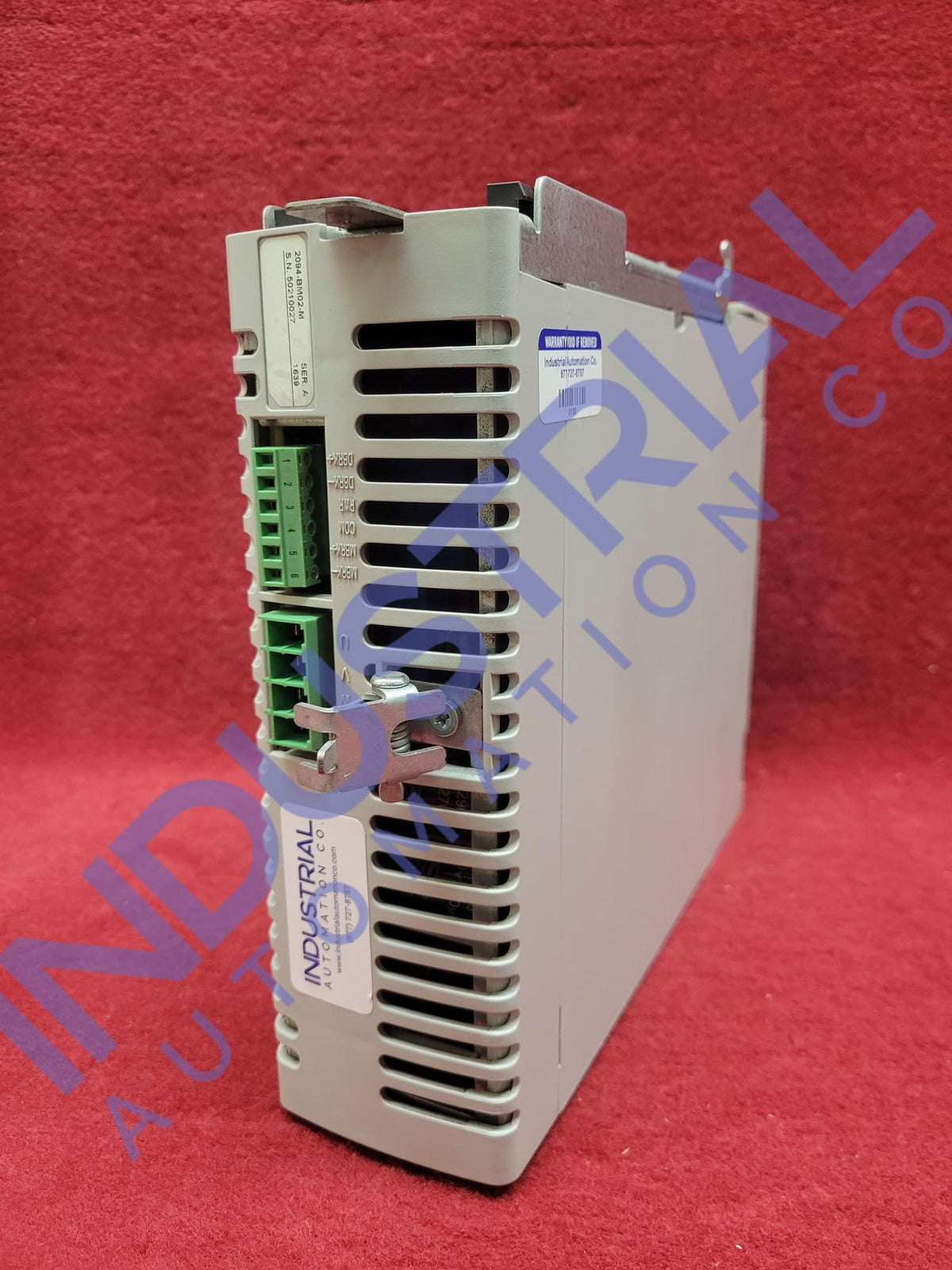Allen-Bradley 2094-BM02-M Industrial Automation Co.
$ 1.290,00 $ 322,50
Allen-Bradley 2094-BM02-M
Allen-Bradley has engineered the 2094-BM02-M to be a versatile and powerful component within the Kinetix 6200 series. It supports a wide range of industrial applications that require precise and reliable motion control. It provides advanced automation solutions with its efficient power management, ease of integration, and robust performance capabilities.
Technical details:
This axis module, operating within the 400-volt voltage class, is engineered for high performance and reliability in various industrial applications. It features a nominal drive voltage range of 360 to 480 Volts AC across three phases, ensuring efficient and stable power delivery.
Designed to handle significant operational demands, the Allen-Bradley 2094-BM02-M dissipates 93 Watts of heat during operation, highlighting its efficiency in energy management. The module can deliver a continuous power output of 6.6 kilowatts, making it suitable for tasks requiring consistent power delivery.
This drive is constructed for practical installation and maintenance. It has a compact footprint, measuring 2.76 x 11.9 x 13.2 inches (70 x 302 x 336 mm). The design allows it to be easily integrated into a cabinet, offering sufficient clearance for air-cooling and maintenance activities.
Operation and Configuration:
Operating the Allen-Bradley 2094-BM02-M involves a series of steps to ensure optimal performance and longevity of the unit. Before powering up the device, it is crucial to verify that all electrical connections comply with the specified wiring standards and that the servo drive is securely mounted in a well-ventilated cabinet.
Upon powering up, the module initializes its systems and performs a self-diagnostic check. This procedure ensures that all internal components are functioning correctly before the drive begins its operational tasks.
Configuring the Allen-Bradley 2094-BM02-M involves several key steps, beginning with the setup of the drive’s parameters through a connected interface, typically a computer or a specialized configuration tool.
Maintenance and Troubleshooting:
Regular maintenance should begin with routine visual inspections of the drive and its surrounding environment. Cleaning the drive’s exterior and the cabinet interior with a soft brush or compressed air can help maintain optimal thermal performance.
Periodic electrical inspections are also vital. Verify the integrity of all electrical connections, ensuring that there are no signs of wear or corrosion. Lubricate the motor’s moving parts as per the manufacturer’s recommendations and check for any misalignment or mechanical wear.
Troubleshooting the Allen-Bradley 2094-BM02-M requires a systematic approach to diagnose and rectify issues effectively. If the drive fails to power up, the first step is to check the power supply and ensure that the input voltage is within the specified range. If the drive powers up but does not function correctly, observe the diagnostic LEDs or the error codes displayed on the interface.
If the drive exhibits erratic behaviour or unexpected shutdowns, verify that the configuration settings have not been altered unintentionally. Re-calibrate the drive’s parameters and re-tune the control loops if necessary.
Frequently Asked Questions:
What is the operating temperature range of the Allen-Bradley 2094-BM02-M?
The operating temperature range for the Allen-Bradley 2094-BM02-M is between 32 to 122 degrees Fahrenheit (0 to 50 degrees Celsius). This wide temperature range ensures reliable performance in various environmental conditions.
What is the output current rating of the 2094-BM02-M?
The 2094-BM02-M provides an output current of 15 Amperes, ensuring robust performance under continuous load. This current rating allows the drive to efficiently power connected motors and other components within industrial automation systems, making it suitable for various demanding applications.
What is the weight of the Allen-Bradley 2094-BM02-M?
The Allen-Bradley 2094-BM02-M weighs 7.0 pounds (3.18 kilograms). This weight specification is important for installation planning and ensuring proper load distribution within industrial automation systems.
Product Specifications Table
| Condition | IAC Certified Refurbished |
|---|
Fast Shipping & Professional Packing
Because of our long-standing partnership with UPS, FedEx, DHL as well as a range of other top global carriers we can provide a variety of shipping options. Our warehouse staff is highly skilled and will package your items in accordance with our exact and precise specifications. Your items are carefully inspected and securely secured prior to shipment. Every day we ship hundreds of packages to our customers across many countries. This shows our commitment to become the biggest online retailer in the world. Both Europe and the USA have warehouses and distribution centers.
Orders that contain more than one item are given processing time according to each item.
Prior to shipment, we inspect the ordered items thoroughly before sending the items. The majority of orders will be shipped within 48 hours. The delivery time is estimated to be between three and seven days.
Returns
The stock is constantly changing and not fully managed by us due to the involvement of several entities, including the factory as well as our warehouse. The levels of stock can change at any moment. Please be aware that it's possible that your order will become unavailable even after you have placed the order.
Our policy is valid for 30 days. If you don't receive the product within the 30 days period, we are not able to issue a refund or an exchange.
The item you purchase must be in the original packaging and in good condition. It must also not be used. It must also be returned in the original packaging.
Related products
Uncategorized
Uncategorized
Uncategorized
Uncategorized
Uncategorized
Uncategorized
Uncategorized
Uncategorized
Uncategorized
Uncategorized
Uncategorized
Uncategorized
Uncategorized
Uncategorized
Uncategorized
Uncategorized
Uncategorized
Uncategorized
Uncategorized
Uncategorized
Uncategorized
Uncategorized
Uncategorized
Uncategorized
Uncategorized
Uncategorized
Uncategorized
Uncategorized
Uncategorized
Uncategorized
Uncategorized
Uncategorized







































